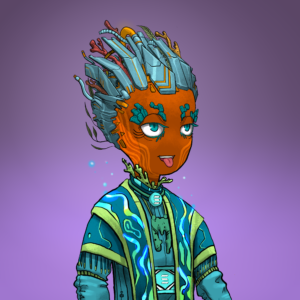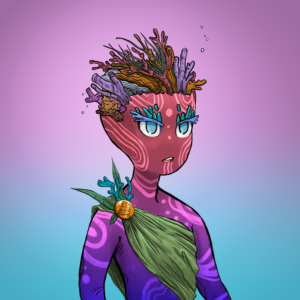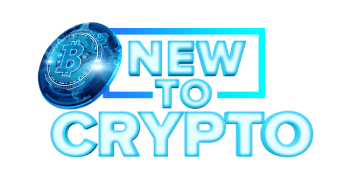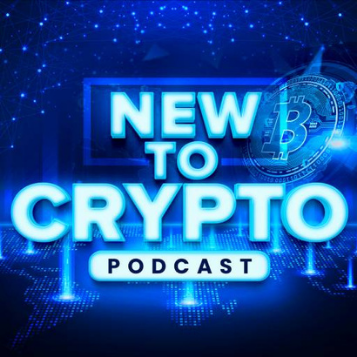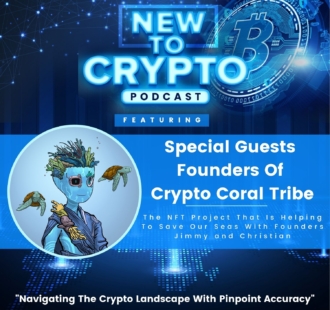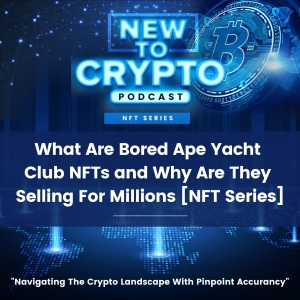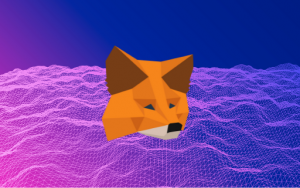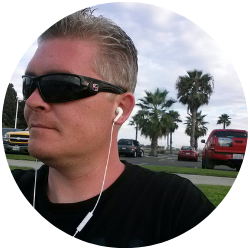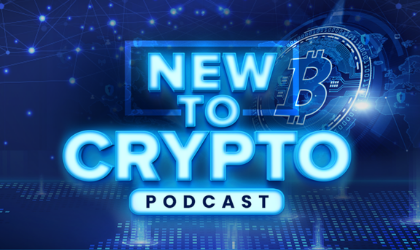Michael 0:00
Stay tuned for today’s episode. I’m joined here with the founders of a new NFT project called Crypto Coral Tribe, which is helping the ocean’s marine life and coral reefs around the world. It’s a fabulous way of how crypto NFT’s and saving our seas has come together with a charity component built into the project. Don’t miss this interview.
Welcome to the New to Crypto Podcast designed to guide you through the crypto landscape with pinpoint accuracy created for the new and intermediate crypto investor. Join your host Crypto Travels Michael as he takes you through the different facets of getting started and succeeding in your crypto journey. New to crypto podcast brings you new episodes daily Monday through Friday with surprise bonus episodes sometimes on the weekend. Let me ask you, are you new to crypto and don’t know where to start? Are you more experienced but have questions? Then you’re in the right place. This podcast is designed for you coming at you from the Trading Center and the Lifestyle Dezign Studio. Here’s your host Crypto Travels Michael.
Brave wallet is the first secure crypto wallet built natively in a web three crypto browser, no extension required. You can store, manage and grow your portfolio, get NFT’s and multi chain support. Download the brave privacy browser at Brave.com/newtocrypto and click on the wallet icon to get started.
I’m excited about this episode. Today, I joined here with an awesome new project. Today we’re gonna be talking about NFT’s coral reefs and crypto and more. And I have two of the co-founders here right now on the show. Jimmy and Christian. Man, it’s a pleasure to have you join us. Welcome to the show.
Jimmy 1:55
How’s it going, Michael, pleasure to have us here, man.
Christian 1:58
Thank you very much, Michael is excited.
Michael 2:00
Hey, man, thank you guys for coming on. Can you guys tell us a little bit about yourselves… before we dive into things?
Christian 2:07
Yeah. So I’m Christian. As you said, I’m one of the co-founders on this project, Crypto Coral Tribe. And I’m mostly responsible for managing some of the creative processes of the art, but also kind of have my hands and everything being an entrepreneurial spirit. And yeah, previously working on this, I’ve been involved with creating digital art and graphics for a couple of fashion brands around the world, Calvin Klein in Asia and Versace in the UK and kind of connecting another passion of mine is his nature and kind of feeling alive feeling like part of my surroundings. And that’s really what drew me to being part of Crypto Coral Tribe and trying to express that through this project.
Jimmy 2:52
So I’m Jimmy, I’ve been joining Christian in this beautiful yet hectic journey since five months back. And I went to work in Mozambique with some NGOs in agri tech and did a bit of project outgrowing there and got a feel of what the fusion between technology and nature could look like. But the inspiration for this project goes way back to kind of my roots, surfing, diving, sailing, and all these things connect me with nature. So I’ve been working with Christian as a co-founder managing the team and, and yeah, excited to be here.
Michael 3:21
Awesome, guys, man I’m really excited about this new project overall, in terms of crypto, this is new and I want to unpack for our audience like, can you guys share in a nutshell, what crypto coral tribe is?
Christian 3:36
Yeah. So crypto coral tribe is an NFT collection, a collection of digital assets, which is their artworks and their tribe of 9000. The idea behind this project is really to be able to employ technology and the technology of blockchain to drive capital and form a community around making a difference in marine habitats. And there’s a series of different activations on our roadmap, which we can probably get into a little bit later. But importantly, one of our missions is really to kind of gamify the experience in a fun, engaging way and rewarding way and even financially in some aspects of being part of a force for change so we are an art collection and a digital collection. But the backstory is really to make a change in the world and leverage blockchain technology to do so.
Michael 4:27
Awesome. One of the things that caught my attention was the fact that you guys talked about the coral reefs and I want to touch on that because having lived in Australia by the beach in Hawaii for a decade, you know, I absolutely love the ocean, all the oceans around the world and the water, the waterways, etc. And let’s talk for a moment about the diminishing coral reefs around the world and how actually does the Crypto Coral Tribe have plans to help with this?
Jimmy 4:55
Yeah, sure thing so as an avid diver that you are and also surfer you know, this is something that most people within the aquatic realm are quite aware of. But obviously, corals have been degrading and declining in incredible speed. And what people don’t usually know is that cause actually houses about 25% of marine life. And in turn the oceans give us 70% of our oxygen also. So calls do play a focal point in all of what and fight towards marine conservation, not just housing, other marine life, but also providing tourism opportunities to local towns and also preventing high tides from reaching coastal areas. So in a way, offering protection to coastal beaches. So that’s what inspired choosing corals as an inspiration for avatars is the fact that they act as a herd of erosion, and provide so much life to that. And we want to, in turn, take a similar position within the NFT space where we’re providing all the resources needed for this kind of ecosystem to thrive, and empower people to drive marine conservation in some way. But yeah, we’ve got four coral NGOs already, that we’ve partnered with all around the world Coral Guardian, Coral Triangle Center, texting rate costs, and they’re all employing different ways in which to combat this challenge. One of which I’m not sure you’re familiar with is micro fragmenting. Have you looked into that, Michael,
Michael 6:17
Micro fragmenting? Yeah, tell us tell us a bit.
Jimmy 6:22
Yes, a Coral… Corals actually take a really long time to grow naturally. And that’s one of the issues here, right. And this doctor actually around, I think it was four or five years ago, through some sort of serendipity by accident found that when you break a coral into very small pieces, the acceleration in growth is actually a 50 fold, all naturally without having to interfere with other technologies, just like when you break a tissue on your skin, that starts to recover much quicker. So this is a process of micro fragmenting planting that a lot of coral restoration programs are starting to pick up now. And it’s, you know, quite a promising avenue in this fight towards and whenever we work with these NGOs, we’ll be planning on employing that. But that’s kind of a glimpse of hope, in this challenge.
Michael 7:11
Wow. That’s yeah, I wasn’t aware of that. That’s awesome. So tell our audience you have plans to basically essentially plant or grow 1000s of corals worldwide. So this is probably going to play, you know, an amazing part in that journey. Yes.
Christian 7:26
Yeah, that’s correct. So basically, our first pledge is to plant 3000 Corals worldwide. And these, as Jimmy said, will be split across different NGOs, some in Europe, some in the Bahamas, some in Indonesia and Bali. And yeah, the possibility of micro fragmentation is, is something that but each NGO has a different sort of technique, you know, some of them are actually like rescuing corals. So some of them actually dive down, for example, in Punta Ala Moana in Spain, one of our partners, they’ll dive down quite deep, and they will take corals out from, like fishing nets and old, sort of like fishing equipment, they’ll take them to a nursery on land, restore them, and then with an organic substrate, they’ll bring them back and kind of stick them back into the reef to flourish again, you know, so there’s different techniques that are relevant to each situation. And yeah, you know, part of our mission is to plant these corals. But we’ll probably get into that in a second as well we’ve got in our approach is to kind of approach this from a 360 point of view, you know, because you can plant as many corals as you want, and try save the ocean like that. But you’re only playing a one dimensional game. You know, there’s so many other aspects to this in terms of education and other ways of kind of solving this problem that we also kind of going to dive in and tackle.
Michael 8:42
Awesome. So you’re working with numerous NGOs, and essentially marine restoration foundations and organizations. By the way, I’m sure you guys welcome any of our listeners that happen to be in marine restoration or foundations or NGOs to contact you guys as well. I actually know some in Hawaii that I’m gonna refer out to you guys. Because I think this is a topic that needs discussion and needs awareness and the fact that you’re tying it into crypto, and using NFT’s is awesome. Tell us a little bit about the characters of your NFT’s. I see that you guys are fusing like Cyberpunk and art together. What was some of the inspiration and motivation behind that?
Christian 9:24
If you look at our characters, the initial inspiration was partly because of our artists, right? So artists, his name is Xiao. He’s a Brazilian artist. And he actually specializes in indigenous kind of artworks and indigenous themes and also a kind of more punk aesthetic, right? So the idea behind these principles or these themes is the indigenous one is like, when you look at indigenous tribes all over the world. There’s kind of an interesting way in which they navigate through their surroundings in which they’re there in a kind of interdependent relationship with things and less sort of cut off plainly then like Modern society. So we wanted to kind of revive some of that old spirit of CO living with nature. And that was something really important for us. The other inspiration for is Solar Punk or Cyberpunk, there’s, you know, they kind of blend and mix. But essentially, the Solar Punk vision is to use technology to create a society that can be kind of zero emission, clean, quite utopian and optimistic, you know. So that was another kind of futurist reference that you will see in our avatars. And you’ll see some of them have robotic eyes and robotic limbs. And there’s that implication there that we were always trying to kind of embrace those old values of that tribalism and that sort of natural connection with this kind of like, Yeah, let’s use technology, let’s use blockchain, let’s kind of, you know, try and transform the system using the tools we have today. So that’s some of the inspiration behind our artworks. And I encourage those guys listening now to come and check them out. We can probably put some links up in the show notes because there’s always a picture that will tell 1000 words. So there’s only so much I could say now.
Michael 11:03
Oh, absolutely. All the links are in our on the blog post page for today’s episode. And, we’ll have some of the images on there as well. But you can also click over and head over to their website. Guys, what is Solar Punk? You know, and because I can see some of our listeners googling right now, you know, what is Solar Punk? It’s phenomenal. But can you like unpack what what it is for, for people that are new to it,
Jimmy 11:28
Say SolarPunk places a lot of the focus on clean energy, but also explores a lot the way in which nature, civilization and technology can coexist, ultimately, right. And Solar Punk is thrown up, but it can, it can be applied in so many ways. So there’s a big movement around Solar Punk art, which is obviously a key factor in any movement, which allows to express the culture of that. However, there’s also initiatives and practices that will overlap with Solar Punk movements, such as, for example, if you’re getting into permaculture, and the way in which people can do it themselves and build their own homes, or even businesses in which some way utilize nature and technology to provide a service in which both of those aspects are kind of coexisting and working in a symbiotic way with each other. So ultimately, it’s this effort or global effort towards a future in which nature and technology can coexist with civilization and more sustainable way. And one of the ways in which it does that is through the use of clean energy and solar energy, thus the term solar.
Michael 12:30
Awesome, and thanks for breaking that down. I understand you guys. You guys mentioned that you have 9000, NFT’s total? Is there only 9000? And how did you come to that number?
Christian 12:40
Yes, that’s any 9000 in this collection. But you know, in the future, who knows, maybe there are other other ideas and ways we want to visualize things down the line. But for this, we wanted to keep it at 9000, one of the factors being at the time, when we were conceptualizing the project, there are a lot of 10,000 NFT collections out there. And we wanted to kind of cut down the supply a little bit to, you know, incentivize and kind of emphasize on value there. And, you know, to be totally transparent as the market progressed and stuff that we were seeing collections with less and less NFT’s, you know, the market was becoming more saturated, and therefore, the amount of supply people would load on would be less, but many of our contracts, many of our DL stayed at 9000. And we took it kind of as a positive challenge, like, okay, let’s go out there and do this with a 9000. You know, it’s something that a community of let’s say, the average number of collectors on a 9000 collection would be like 5000, or 4500, the average person having two NFT’s. That’s a nice community base, you know, to be working with and, and a good number, a good number to kind of get people involved in around our initiatives and this kind of stuff. So yeah, that’s kind of how it stuck.
Michael 13:48
Absolutely, I can definitely appreciate that. And I see that you and your team chose to build on Solana, can you tell us a little bit about that?
Jimmy 13:54
So that was a long process, my goal long process, because the Ethereum is obviously for those of you out there that don’t know theorem is a dominant one right now, in terms of NFT’s if you’re looking at metrics, such as total volume, sales, amount of collections listed, and even the biggest collections with the highest value, such as Bored Yacht Club, and so on, they’re all listed on a Ethereum. However, the main thing was a Ethereum’s current Co2 emissions, which for those that don’t know, is, you know, substantially higher at the moment, if Ethereum 2.0, which is planned to be rolled out in approximately six months, is intended to reduce that and increase increase the efficiency. However, when we looked at Solana, which at the time of the idea was emerging, there was a substantial amount of collections which were creating a solid community behind them. And mainly reports came out recently showed that a transaction on Solana only consumed about the similar amount of energy is to Google searches, so completely negligible. And we thought that since we’re going to be dealing with NGOs and corporations, which tend to buy into the news that cryptocurrencies are bad for them environment all NFT’s consume and so on, it was important for us to have strong fundamentals behind that. And Solana leaves no room for kind of argument in terms of Co2 emissions, they’re a part of that. It’s also the Solana space is newer. And therefore, we found that communities tend to be a bit more tied and together and easily accessible. So the main derivative was the energy consumption, but also the quality of projects slowly rising in the Solana space.
Michael 15:26
Brave wallet is the first secure crypto wallet built natively in a web three crypto browser. What’s web three, web three is freedom from big tech and Wall Street, more controlling better privacy. But there’s a weak point in web three, your crypto wallet. Most wallets are browser extensions, a web two technology. That means the same old risks, app spoofing, phishing, scams and theft. Brave wallet is different. Brave wallet is the first secure wallet built natively in a web three crypto browser, no extension required. With brave wallet, you can buy store, send and swap assets, manage NFT’s even connect other wallets and daps. All from the security of the best privacy browser on the market. Whether you’re new to crypto, or a seasoned pro, it’s time to ditch those risky extensions, it’s time to switch to brave wallet, download brave at brave.com/newtocrypto and click on the wallet icon to get started.
I’m sure our listeners can definitely appreciate that, not to mention that the fees are significantly less currently.
Jimmy 16:38
any of you complaining about gas fees on a theorem go to the salon, and you’ll be amazed about the I think is like 50 cent fees sometimes or even less for a transaction. So that’s definitely a treat.
Michael 16:48
So let’s break down why I want to get into the Impact Fund. And then afterwards, Christian, you had mentioned about education and planting coral, etc. But what is the impact fund in your project? And why is it important?
Christian 17:02
Yes, the Impact fund is kind of like the spearhead of our actions in a sense, right. So it’s, it’s a fund, it’s a wallet, where 50% of all primary sale and secondary sale commission’s will be driven towards you know, and actually, everything we do in our future as well. 50% will be going to this Impact Fund, you know, so the intention of the fund is to sort of drive marine restoration, and other activities that promote the health of our planet. One of the layers towards that is such things as planting coral, like the 3000 coral, we plan to plant around the world. But importantly, the idea with the Impact Fund is that there are going to be many projects curated and presented to our community. So if you own an NFT of ours, you will be able to have a vote and have a say on how those funds get directed. So in a sense, it’s a community driven effort to make a difference on an environmental level on our planet. And not only so part of the activities and the projects which will be presented, the impact on will also extend to the realm of art and creativity. So it’s not just planting coral, or cleaning up beach chairs, all these kinds of things you can do on the field, there’s also going to be room for kind of creative expression and creating artworks or NFT collections that promote the idea and wake people up to the issues that we’re facing today. And like really get people like, wound up and you know, like ready to make a change. So we want to approach it from this sort of creative and emotive side, plus this kind of a practical and on the field side and empower our community members to actually, you know, direct that and channel that.
Michael 18:43
Awesome. You’d mentioned something that brings up a question. So we have our listeners listening. And let’s say that they’re definitely interested in getting involved, maybe they purchase an NFT. So what does that look like for them in terms of access to the community, voting, governance, all the kinds of things, but for the average person listening, you know, Pete them a picture of what that will look like for them.
Jimmy 19:07
Right. So as soon as you get your NFT, we’re planning on launching by the end of February, which we’ll announce soon. But once you look at our project, you love the art, you really trust our vision and you buy that NFT ultimately, the Impact Fund will take place initially as a dashboard online, where you’ll be able to go onto the website, connect your wallet, the website will verify that you own one of the NFT’s from our collection. And that will give you access to this gamified dashboard where not only you’ll be able to see previous projects that we’ve already invested in and how we’re tracking the impact of those, as well as projects that have been proposed. Now, it will allow you to kind of discuss around those and navigate the different projects that have been proposed and assess it by yourself. And then that would lead to an open discussion with other community members as to how the funds should be managed. There will also be some incentive in order for people to propose their own projects because as you mentioned before, there’s a lot of things surrounding the value of this one of it being the actual investments. However, just driving discussion and making people aware of this through engaging conversations is also a big focal point of this, right. So ultimately, it’ll be this dashboard that you can navigate to assess previous investments, analyze current ones, and then discuss with other community members as to how funds should be managed, as well as leaving room to propose any projects that people find relevant to us.
Michael 20:25
Awesome. So I think that has answered the question, if anybody wanted to know exactly how to get started, and what it would look like, if they got started. Let’s go down that rabbit hole that we mentioned previously about. So you’re planting coral. But then Christian, you kind of had mentioned, you know, dig more depth into the education component, etc. Can you kind of unpack that for us?
Christian 20:50
Yeah. So kind of since the beginning of this project, you know, we obviously had this great journey and connecting with all these different NGOs and seeing the importance and doing things for the environment, and plants and coral with this project that’s kind of really been at the center of how we’ve organized our activities. Right. But in every conversation we had with them and and internally with ourselves, you know, we’ve always felt, yeah, so what are the main problems affecting the ocean? Right? One of the main problems is pollution and acidification of waters. Another problem is actual global warming temperatures. And for example, with that one, that’s not even, that’s outside of the question of the corals. You know, that’s like that’s happening because the world is moving in a certain direction, right. So we always wanted to have space for this project, to work on that level of education work on that level of trying to tackle the causes outside of the very subject matter, we’re dealing with IE corals, and provide something that so kind of approach it holistically, you know, so that’s why in our roadmap, one of our activations as we sell the collection, is to establish what we call a SolarPunk Academy, kind of playing on the the words of Solar Punk, and this idea that we can equip people with the knowledge, the resources and the education, whether those artistic skills, business practices, or even practical things about growing food, and these kind of things associated with permaculture and living resiliently. And in balance with our environments, to kind of bring this other dimension into what we’re doing here as well. Yeah.
Michael 22:18
Awesome. Awesome. That just brings me to several more questions, your 2022 roadmap, but also, you know, if our listeners, you know, would like to join your community, and they have skills and talents, you have a growing community. So I’m sure that you guys welcome, you know, people with talents and skills, even like you mentioned, or other ones, you know, of all different types.
Jimmy 22:41
Absolutely. And we’ve already started collaborating with a few community members that have come up, which are either artists or environmental activists, we just avoided someone that we don’t know in real life from our team that’s doing cool restoration all across Africa. So you know, a large part of this as well is to collaborate not just with NGOs, not just with other collections, but within the community. And we’re always looking for new people to kind of work together on this and on board and, and yeah,
Michael 23:08
Awesome. And I see that you guys have a Twitter and discord. And is this how our listeners can join your community and reach out to you. We have all the links on the blog post base for today, but what are the primary methods that people can reach out to?
Christian 23:21
Yeah, so our Twitter’s a good place to sort of stay informed and, and have a general overview of what’s happening and we keep people updated there, but the discord is really where the magic happens, you know, so that’s where we’re running a lot of competitions, giveaways. We’ve even got some in discord games and an insert of a boy in which is a bit of a revolution and getting everyone very excited, you can get some Coral cord, no joke, come find out you know, and, and there’s a lot of interesting conversations there happening around, you know, what we address with our, with our projects, so that’s a fun place to be. And if you’re new to it, I also recommend just skimming through the website. Jimmy crafted it kind of towards the end of last year very, very beautifully. And I think it illustrates our vision. And if you just want to read through it, like just take your time and read through it, you get all the information there to then come in, fully equipped and informed into the discord.
Michael 24:12
Yeah, it’s an awesome website. I have to agree with you. Tell us about what 2022 And your roadmap looks like.
Jimmy 24:20
So yeah, exciting times ahead, Michael. We’re getting ready to launch and overall, we have the core roadmap where we’ve structured in a way where we’re aiming targeted and very committed to going for the sellout and starting with strong foundations. However, we understand that not everything can go as expected. So we have crafted everything in a way where regardless of the sellout outcome, everything can be activated in due time. So just by a 10% Sell out and as soon as we sell 10% of our collection, the Impact Fund will be able to be activated, where the funds will be stored in the wallet and the dashboard will be activated. And we will start working with the community of curators To propose projects to the community, and start investing in them. And then as soon as we sell 30% of our collection, that’s when the payments to all NGOs will be triggered. And we’ll start monitoring the planting of 3000 cores around three continents. And then a bit more down the line will unleash the Solar Punk Academy, allowing people to access guided information regarding solar punk art, business practices, sustainable, permaculture, all of that stuff. And then once we reach the 100% sellout is when we’ll be launching our mountain, much anticipated Aqua token, which will be a token that we distribute to holders for staking their NFT, and will be tied to the governance of the Impact Fund for the purchase of sustainable merchandise designed by one and only Christian, which has been working with some great brands out there, including Calvin Klein, and really excited about that, as well as linking it to the Solar Punk Academy, and so on. So beyond that, we have been working with a team of video producers, which could open the doors to some great forms of entertainment in order to get our message across. However, we are placing a strong focus in allowing all community members to have a saying and how we develop beyond that point. So you know, we don’t see the point in producing a great comic educating people about this, if that’s not what our community wants. So once all of these initial initial initiatives have been completed, will kind of let holders also decide and have a say and the steps ahead for the CCT.
Michael 26:24
Okay, so basically the launch and release of your NFT series is coming up this quarter, right? It’s coming up soon.
Christian 26:31
Yeah, that’s right. We’re aiming for quarter one this year. And we’re giving ourselves a little bit of margin right now as we build our community and get the numbers into a place where we really feel comfortable that we’re gonna sell and sell big, you know, and really, like be able to activate a lot of this. But right now we’re building good momentum. And yeah, we’re, we’re on course, to launch in quarter one.
Michael 26:55
Awesome, and I love the idea about the Aqua token. And I’m going to have to have you guys back on the show. We’re going to be doing YouTube videos here shortly. And we’ll have to have you come back on the show. And we’ll unpack some more for our listeners. Is there anything else in closing that you guys would like to share about sneak peeks or anything, you know that you have plans?
Christian 27:15
I think we’ve covered a lot of our project, you’d say, there’s not much there’s not much left to squeeze out there. But what I would say and what’s really been exciting is what Jimmy hinted to earlier, which is our marketing campaign, basically leading up into launch, got really exciting strategy. And we’re going to be animating our avatars into into 3d, which opens up a lot of potential, visualizing the mythology, visualizing the whole story behind what we’re doing, and also potentially in the future, having them their existence in the metaverse, you know, in 3d. So, yeah, that’s definitely an exciting Avenue. We’re currently speaking to some different animators who have a very high standard. And, yeah, artistically and creatively… I think it’s going to be a really beautiful possibility for us.
Michael 28:04
Awesome, guys. I’m excited about your project here in 2022 and beyond. Jimmy and Christian man, it was a pleasure having you on the show. And you guys are welcome back. We’re gonna have to do a video.
Jimmy 28:14
Absolutely. Michael. Thanks a lot for having us, man. Hopefully, you listeners aren’t seeing this, but you’ve got a beautiful surfing image behind it. So maybe the next podcast can be done somewhere in Hawaii by the beach, cutting a few waves instead of in our office.
Michael 28:28
Absolutely. If you’d like today’s episode, definitely subscribe and like to the podcast, show your support and chime in here tomorrow for another special episode. Until then, make it a great day.
Thanks for tuning in to New to Crypto Podcast. If you liked the episode, be sure to follow and subscribe. You can listen to every episode on all major platforms to have an interest in being on the show or one advertising reach out at newtocrypto.io. Head over to our site newtocrypto.io to access the resources mentioned in each episode. Until next time, remember to navigate the crypto landscape with pinpoint accuracy.
